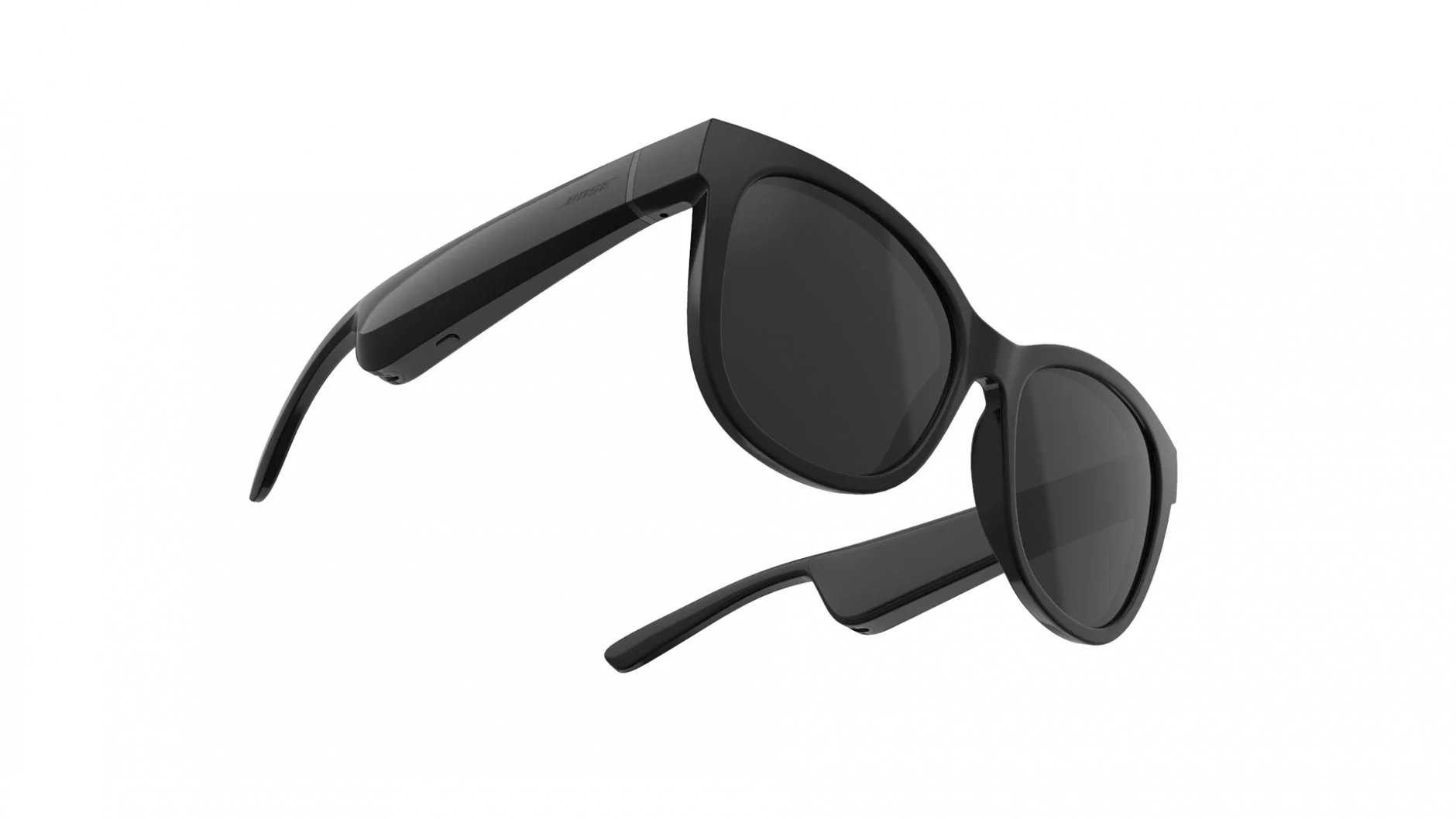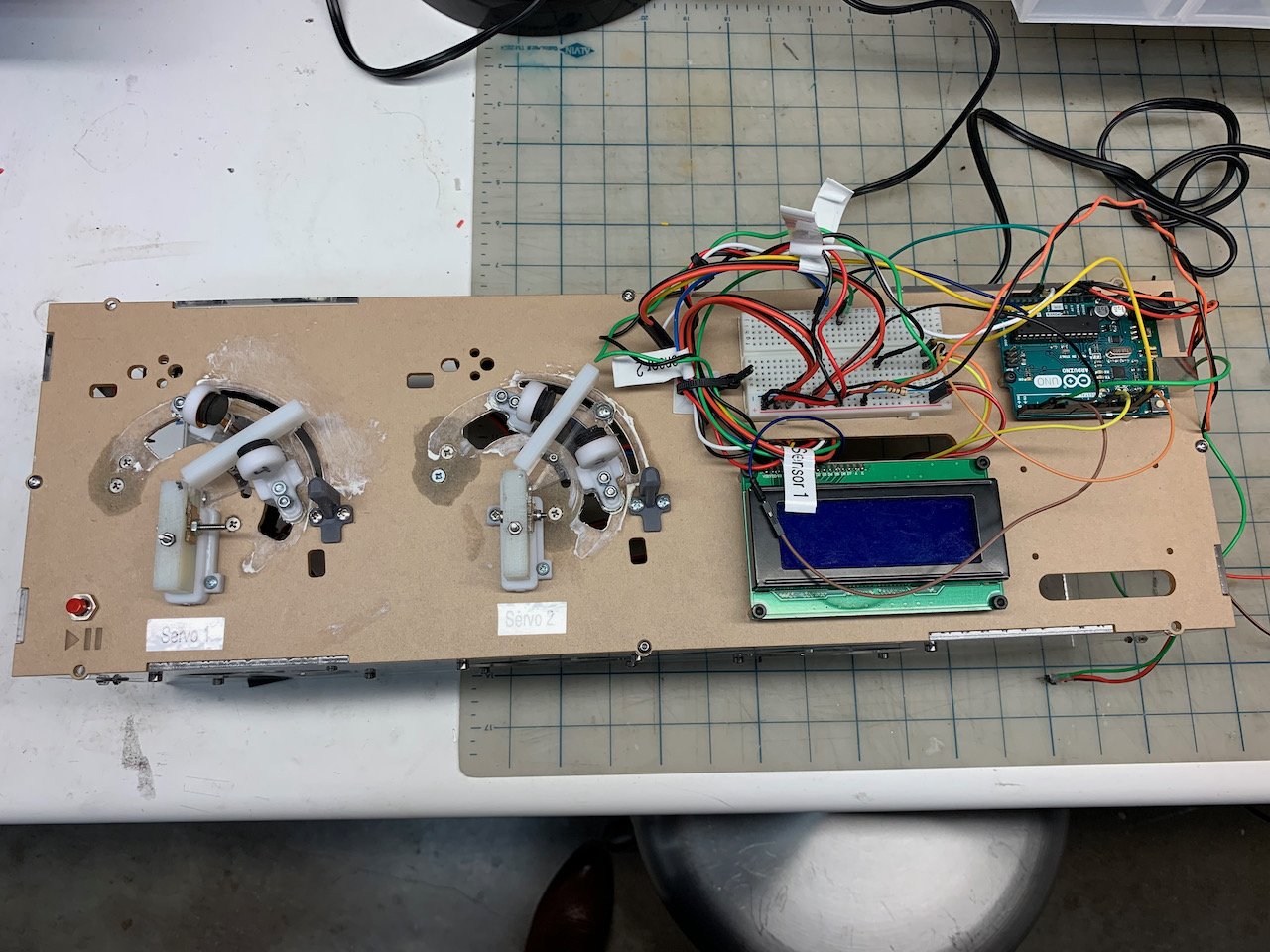Testing Fixture for Sunglasses Lifecycle Testing
My first job out of college was a three-month stint as a contract mechanical engineer for Mixer Design in Austin, TX. My main task during my time there was helping them with the mechanical design of the Bose Frames Audio Sunglasses. My focus would be characterizing how the feel of the sunglasses changed over the life of the product. I would achieve this by measuring the force required to open and close the temple (all terms taken from here) over a simulated product lifespan of 20,000 cycles.
Bose Frames Audio Sunglasses
The first step in this process was creating the test samples. An engineer at Mixer had already designed a hinge mechanism, but the frames were still being designed. I needed parts that replicated the behavior of the hinge interface between the temple and the endpiece. Getting a statistically significant result would require many samples, so I decided that injection molding the parts would be the most efficient approach.
This was the first injection molded part that I had designed. I understood the basic concepts of core and cavity molding, so I assumed that designing the part would be trivial. I was wrong. It took me several iterations before I had a design that was ready for manufacturing.
A machined fixture part (left) and an injection molded test sample (right)
The second step in measuring the force was building the test fixture. This process was surprisingly just as difficult, if not more difficult, than designing the test samples had been. The most challenging aspect was getting reliable data from the low-cost force sensors. The solder joints connecting the sensor breakouts to the Arduino often broke during the cycle testing despite my best attempts at strain relief. What data I was able to gather was noisy, and it was unclear if the trends I saw were real. This low-cost approach was not going to work.
Mixer eventually agreed to buy a digital force gauge, so I redesigned the fixture to use that instead. When I analyzed the results from the trials with the force gauge, they had a similar behavior to the trials using the lower cost sensors. This time, however, I felt confident in the results.
Original, Low-Cost Testing Fixture
Updated Testing Fixture with Digital Force Gauge
I learned a great deal in my time at Mixer. My technical skills improved. Gaining experience in top-down modeling and injection molding have been incredibly helpful in my career going forward. So too was the realization that it is important to have the right tools for the job. The soft skills I developed, however, have been much more impactful.
At Mixer I learned when to ask for help. During my previous experience at Function Engineering, the other engineers encouraged me figure things out for myself. The ability to troubleshoot and learn on your own is crucial, but I took it to the extreme. By the time I left Function, I was trying to do everything myself. Over my three months at Mixer, however, I began to find the middle ground. Through trial-and-error I became better at knowing when to keep plugging away at a problem and when to ask for advice.


